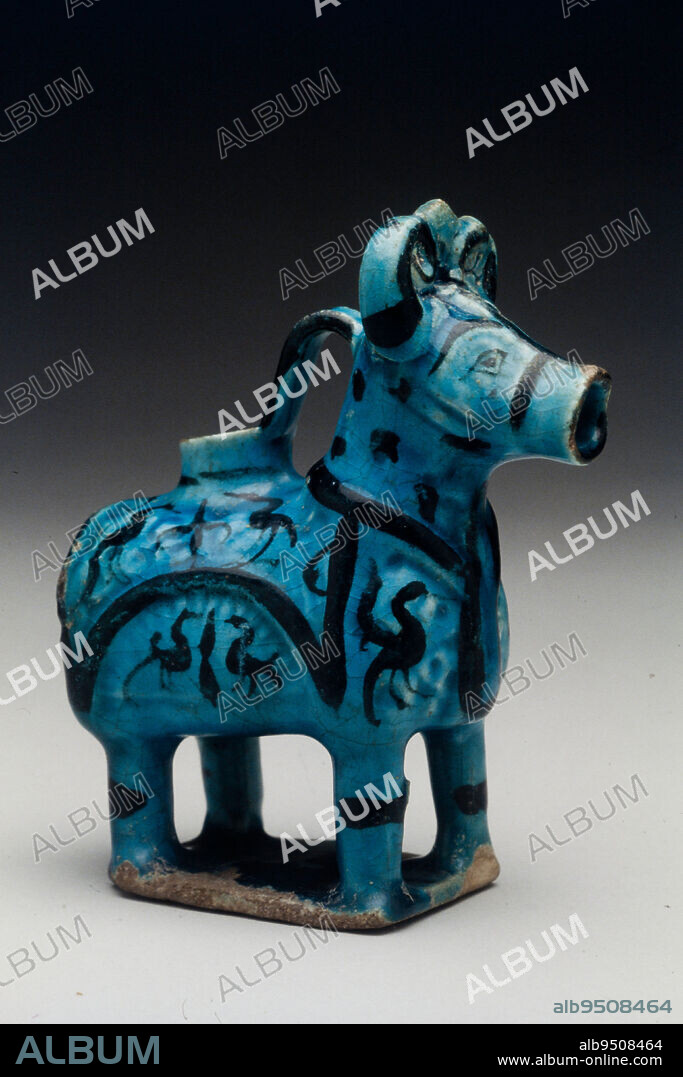alb9508464
Aquamanile (Ram-shaped Ewer), 13th-14th century, 7 in. (17.78 cm), Stonepaste with clear turquoise glaze, black underglaze-painted decor, Kashan ware, Iran, Seljuk period (1038- c. 1194), Although round ceramic sculpture is relatively rare in Islamic art, decorated figures in both metal and ceramic ware were popular in Iran and Turkey during Seljuk rule. The bull shape, shown here in two examples, was the most common, but camel, ram, and lion-shaped vessels have survived as well.

|
Add to another lightbox |
|
Add to another lightbox |



Caption:
Aquamanile (Ram-shaped Ewer), 13th-14th century, 7 in. (17.78 cm), Stonepaste with clear turquoise glaze, black underglaze-painted decor, Kashan ware, Iran, Seljuk period (1038- c. 1194), Although round ceramic sculpture is relatively rare in Islamic art, decorated figures in both metal and ceramic ware were popular in Iran and Turkey during Seljuk rule. The bull shape, shown here in two examples, was the most common, but camel, ram, and lion-shaped vessels have survived as well.
Credit:
Album / quintlox
Releases:
Model: No - Property: No
Rights questions?
Rights questions?
Image size:
3744 x 5616 px | 60.2 MB
Print size:
31.7 x 47.5 cm | 12.5 x 18.7 in (300 dpi)
Keywords:
1038-C • 1194 • 13TH-14TH CENTURY • 17.78 CM • 7 • ANT. OR.: IRAN • AQUAMANILE • AQUAMANILE, WATER-PITCHER • BLACK UNDERGLAZE-PAINTED DECOR • BULL SHAPE • CAMEL • CERAMIC WARE • CHARGE • CLEAR TURQUOISE GLAZE • COMMON • DECORATED FIGURES • GENERAL • IRAN • ISLAMIC ART • KASHAN WARE • LAMB • LION-SHAPED VESSELS • METAL • PERIOD: SELJUK TURKS • POPULAR • RAM (ANIMAL) • RAM-SHAPED EWER • RELATIVELY RARE • ROUND CERAMIC SCULPTURE • SELJUK PERIOD • SELJUK RULE • SHEEP • SHOWN • STONEPASTE • SURVIVED • TURKEY • TWO EXAMPLES • VESSEL: AQUAMANILE • WATERPITCHER, AQUAMANILE • WELL
 Pinterest
Pinterest Twitter
Twitter Facebook
Facebook Copy link
Copy link Email
Email

